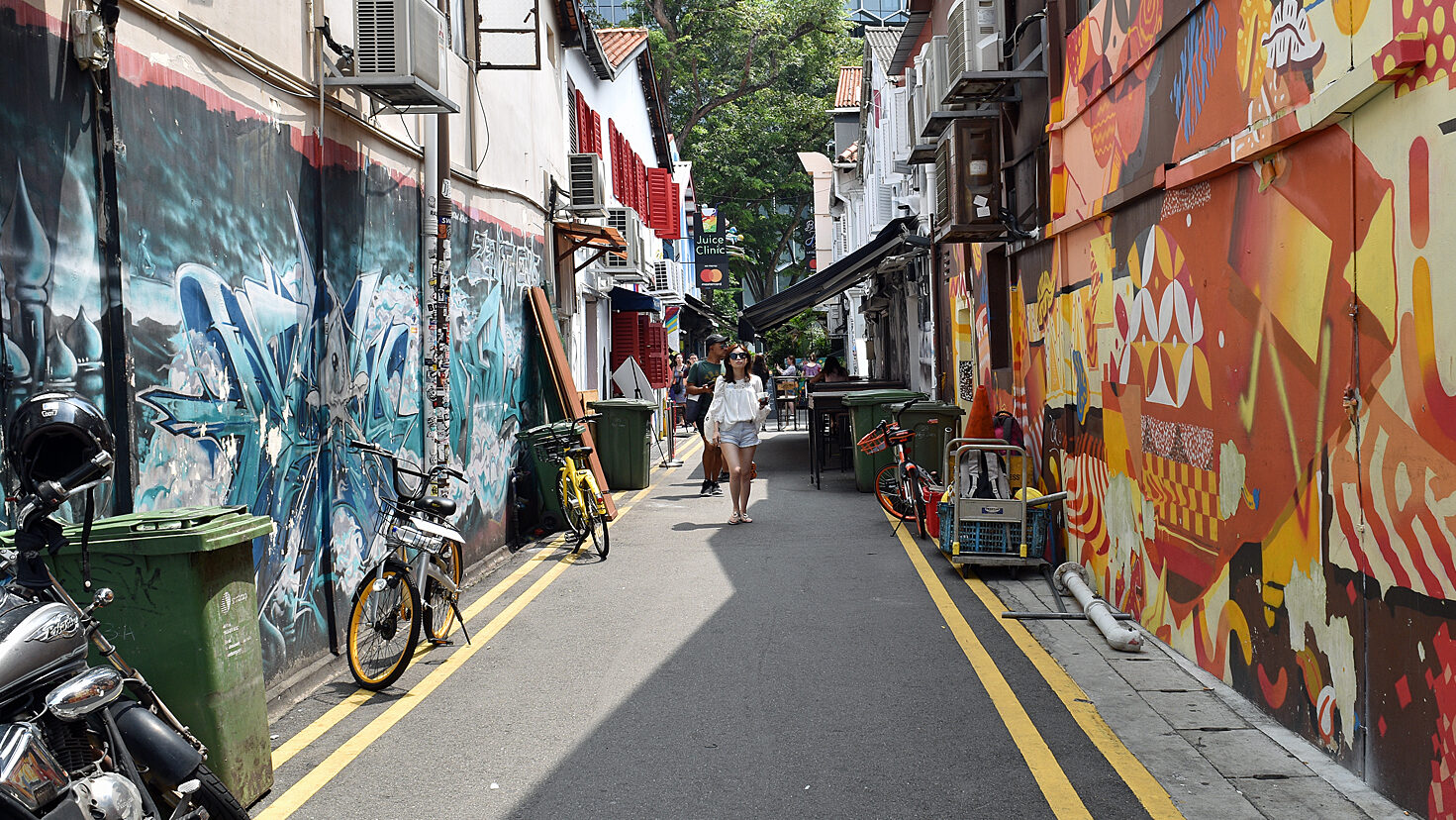Wall dressed up: Graffiti and street art in Singapore
December 23, 2023

On 23 December 2013, the Urban Redevelopment Authority, the National Arts Council (NAC), and the Singapore Land Authority announced plans to make two walls along Rail Corridor available for street artists to develop their work. In 2014, the NAC established the Public Art Trust with funding from the Ministry of Culture, Community and Youth, which aims to promote street art in urban spaces in Singapore. In addition to the space along Rail Corridor, the Singapore government also retrospectively approved business-commissioned graffiti along Haji Lane. These signify a transformation of graffiti and street art from a largely criminal affair to a state-recognised form of expression.
In ‘Wall dressed up: Graffiti and street art in Singapore’ (City, Culture and Society, 2020), Associate Professor T. C. Chang (NUS Geography) examines the Singapore government’s attempts at co-opting the subculture of graffiti and street artists, which he posits began in 2014. The piece first explores the evolving place of art in Singapore, before examining the tensions inherent in the embracement and co-option of street art in the city-state. Focusing on government policy and responses by artists, he identifies three tensions: (1) externally imposed (i.e., government-led) versus internally generated (i.e., artist-led) change, (2) legislative versus creative approaches, and (3) the different priorities and goals between governments and artists.
A/P Chang examines these tensions through interviews with government officers, writers and artists, and organisational leaders involved in street art initiatives. He employs the conceptual frame of worlding, or ways of becoming global through problem-solving and place-making. Worlding involves parties and institutions at various scales and possibly differing objectives. For instance, governments operate top-down at the macro-scale, while artists operate bottom-up at the micro-scale.
A/P Chang reveals that the government hopes to encourage street art in Singapore to create a ‘world-class home’ for an increasingly sophisticated Singaporean public by promoting the arts, and in doing so expand the nation’s soft power through the creation of artistic places. While creating new tourist spots, street art places can also increase Singapore’s economic clout by shifting outside perceptions of Singapore’s culture.
The significance of street art and graffiti, however, is different for artists—which is itself not homogenous. A/P Chang identifies two strands of thought amongst the artistic community: ‘purist’ vs ‘pragmatist’. For purists, graffiti is an expression of rebellious spirit and self-expression, and is incompatible with government license or economic patronage—the two strategies of official recognition (and co-option) of hitherto illegal art. Government efforts are thus unable to completely co-opt these artists’ activities into neat confines. Pragmatists, in contrast, are agreeable to cooperating with government-sanctioned programmes to develop their art form—they recognise benefits including legal spaces for the exhibition of their works as well as avenues to dispel the negative stigmas surrounding graffiti and street art.
This bifurcation of the sub-culture, A/P Chang postulates, could be damaging for the street art subculture, however, as purists disdain both government co-option efforts and pragmatists who ‘succumb’ to them. On this note, he suggests further research could be done to investigate the strategies subcultural artists use to challenge and transform rules to fit their objectives.
Read the article here: https://www.sciencedirect.com/science/article/abs/pii/S1877916619302164
